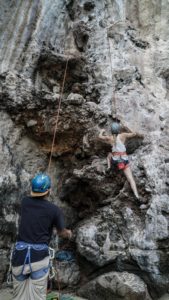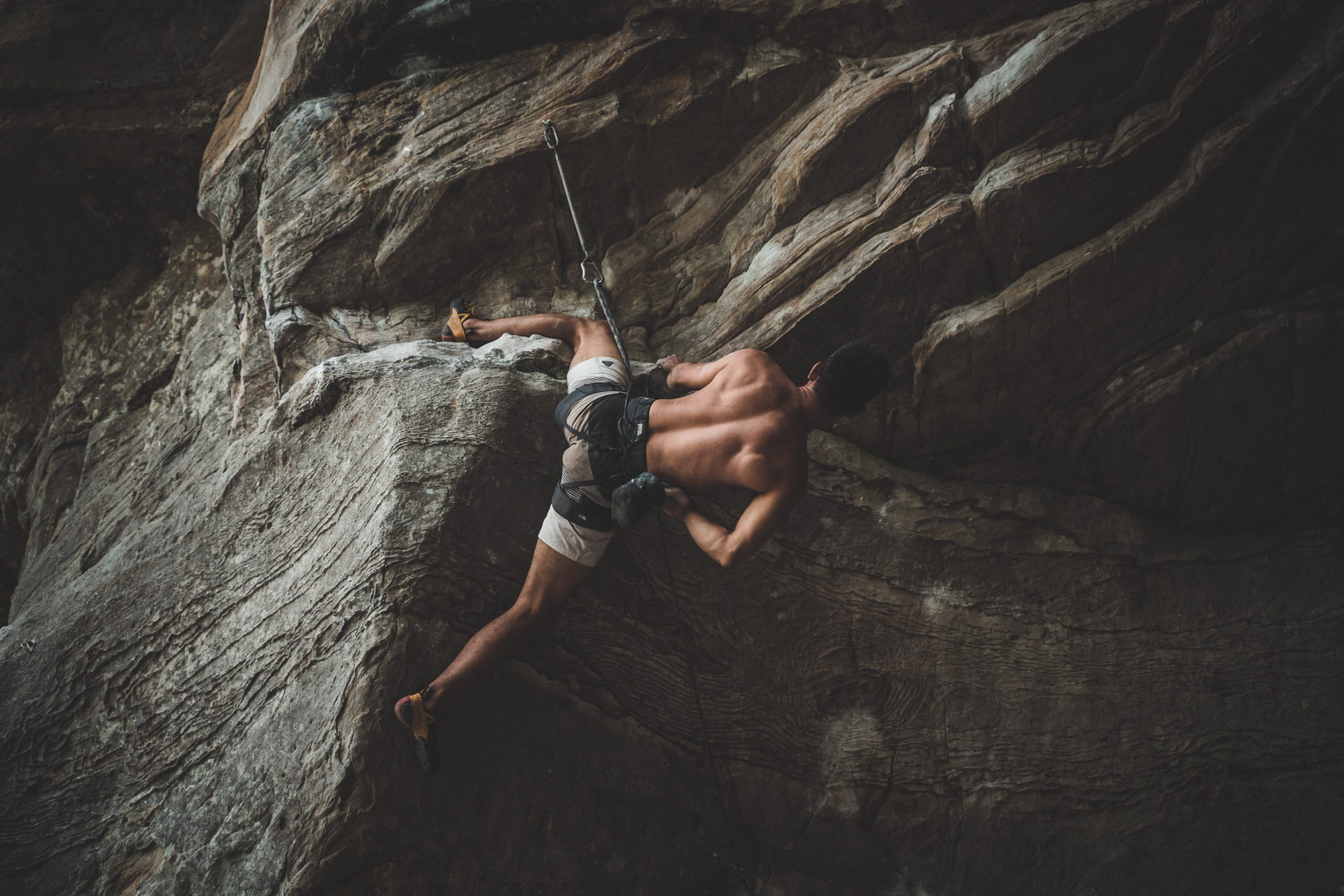If you are new and looking to get into the sport, you may be wondering what is the difference between bouldering vs climbing. It must be noted, there are many types of sub-sections of climbing, and we’ll go into them briefly further down.
Bouldering is its own subsection of the sport. We have already detailed the history of bouldering, so you can find out where it came from.
Bouldering – A Definition
We have already created a definition of what is bouldering in our specialised guide. Nevertheless, we will give you a quick description here.
Basically, you climb without gear or ropes, to get to a defined point, usually a few metres high. You will have thick mats protecting you if you fall. The main difference here is that when bouldering you can do it perfectly safe on your own. This means you can train, practice, and climb repeatedly without a partner.
Climbing – More Than One Type
As you may know, there are also many different types of climbing variants that include ropes. We’ll run you through a few of the variants below, so you can get an idea of what we are talking about. We won’t mention alpine, or ice climbing here!
Top Rope

Basically, you are connected to a rope (by way of a harness) that passes through an anchor at the top of a climb. You will have a belayer, who takes slack out of the rope as you ascend. This means if you let go, you will not fall very far. It is one of the safest forms of climbing – as long as you have a good belayer – and many beginners will start here.
Sport/Lead Climbing
Sport climbing is a very popular way to take in the sport. It is done on short routes, and you used fixed anchor points on the wall. The difference here, is you attach the rope to these anchor points as you ascend, so you will sometimes be a few metres higher than your previous anchor.
Trad Climbing
The holy grail of climbing. Some will say all other forms of the sport are inferior to this. But we say each to their own. In trad climbing, you have to place protection in the wall yourself. You do this as you ascend via specialised ‘cams’ and ‘nuts’. When you descend, you take them with you. This part of a ‘leave no trace’ style of climbing and is done on most big-walls.
The Main Differences Between Bouldering and Climbing
So, what are the main differences you can find bouldering vs climbing? We will detail them all now. Although they are from the same tree of sport, they are inherently different. You may require different techniques and strength. Furthermore, you may simply prefer one style over the other, and that is ok!
Equipement Needed

One of the major differences between bouldering and climbing is the amount of equipment needed for both. In bouldering, at its simplest form, you really don’t need anything. If you want to push hard, then shoes and chalk are the main tools. Of course, a crash pad would be essential too. We have a list of other bouldering gear, but that is more superfluous needs.
In climbing, you will need many additional things. A rope, harness and helmet are the basics. But if you want to do sport climbing you will also need quickdraws. If you are trad climbing you will need additional pieces of protection, such as cams and nuts. Eventually, you will have collated a ‘rack’. All of this combined is rather expensive.
Technique Differences Between Bouldering and Climbing
Bouldering relies heavily on strength and high-intensity movements in a short space of time. Naturally, you need technique to perform these, and you have to perform them to your maximum. Dynamic movements are more common and explosive power is really what is needed most.
Climbing is better thought of as a long-form. With routes long enough to make your arms burn, the technique is focused on the economy of movement, and efficient clipping and progression. You need to have endurance and need to know when to use your strength reserves. If you burn yourself out in the first few metres, there is no way you will get to the top.
Injuries
Obviously injuries can happen in both bouldering and climbing. It must be said that bouldering can cause more common injuries such as a sprained ankle, tendonitis, or finger joint pain. If you fall when bouldering, rolling an ankle can easily happen if you don’t employ the correct technique.
Nevertheless, injuries in climbing have the added risk of more fatalities. This is generally down to personal mistakes, or equipment failure. Rockfall can also pose a danger, especially from climbers above you. Furthermore, if you fall when you are high above your last anchor, a big injury such as broken ankles can also happen.
The reality is, both pose inherent risks. However, with the correct safety measure and procedures, they can be done safely.
Social Aspects of Bouldering vs Climbing
Both bouldering and climbing are inherently social sports. In climbing, you need a partner you can trust on the belay. Even so, once you are on the wall, you are by yourself and will communicate very little with others.
In bouldering, you can climb on your own. However, it is also very popular to go in groups. Furthermore, once you are at a gym or crag, people tend to be very social and open. This means you can end up talking to loads of new people and making lots of friends.
Bouldering vs Climbing: Which is Best?
It is a debate that has raged for the ages. There will never be a definitive answer to whether bouldering vs climbing is better. The traditionalist will obviously go for the latter. However, these people are dinosaurs. The sport has progressed in unimaginable ways in the past decade. Now it is easily accessible for everyone.
We would suggest trying all forms of the sport out. It is perfectly ok to combine both bouldering and climbing and will make you a better overall climber if you do so.
Obviously, we are geared towards bouldering on this site. Nevertheless, we are climbers too. They are both wonderful branches of the same sport!

